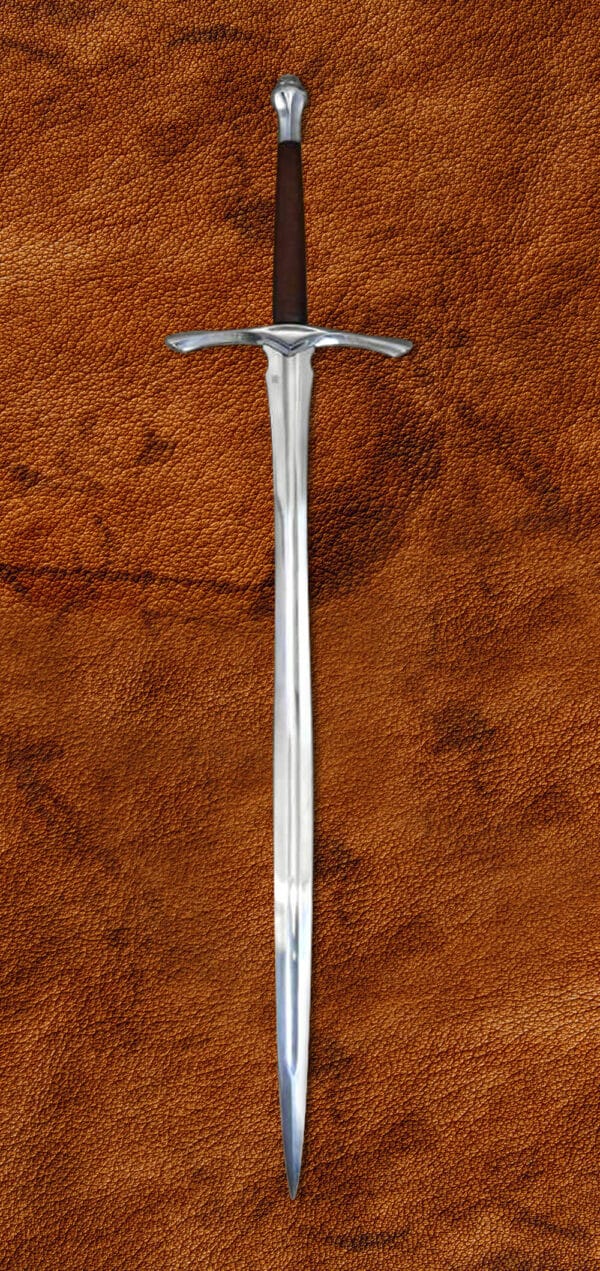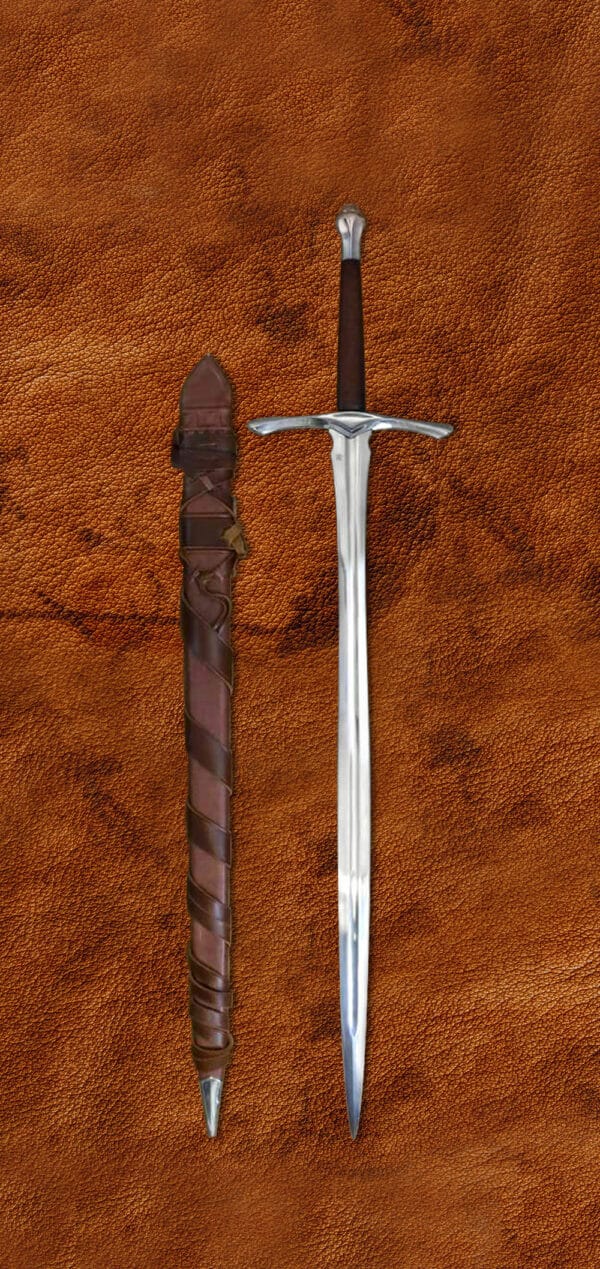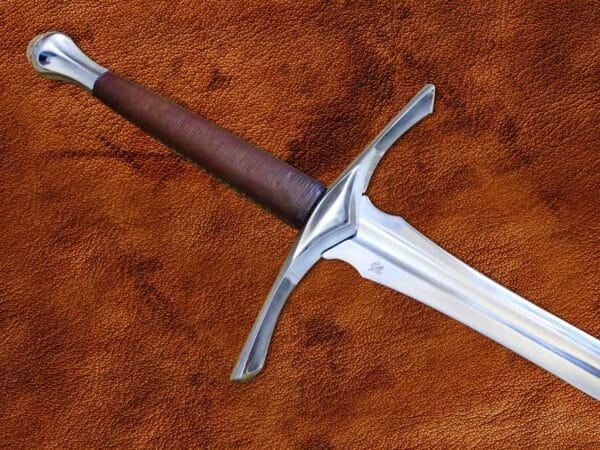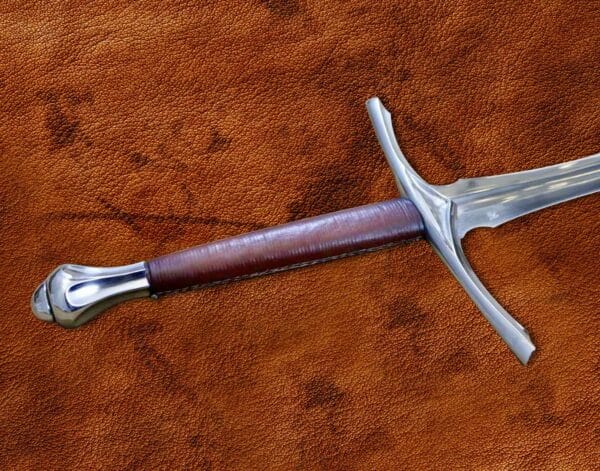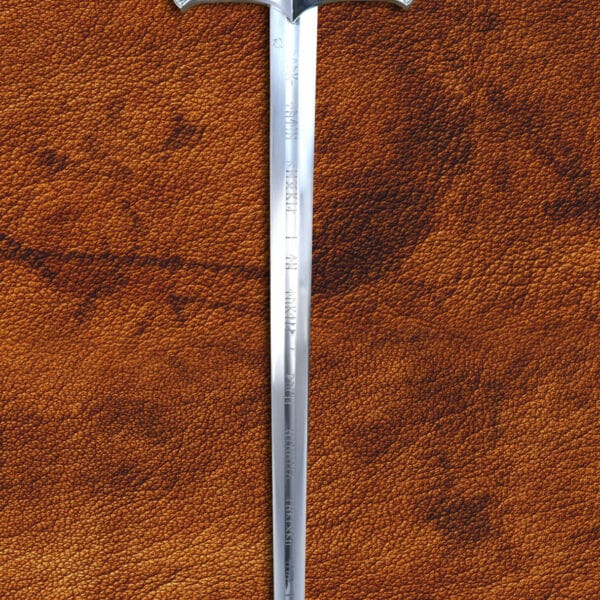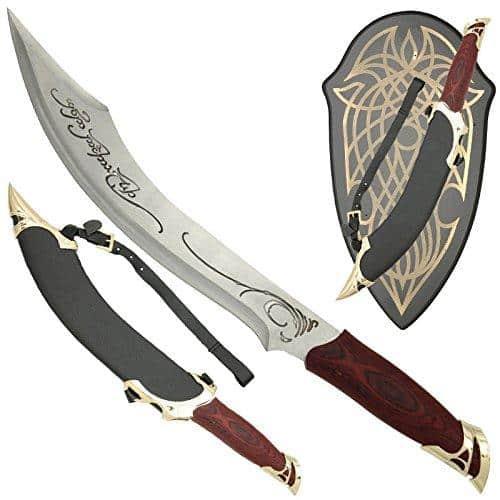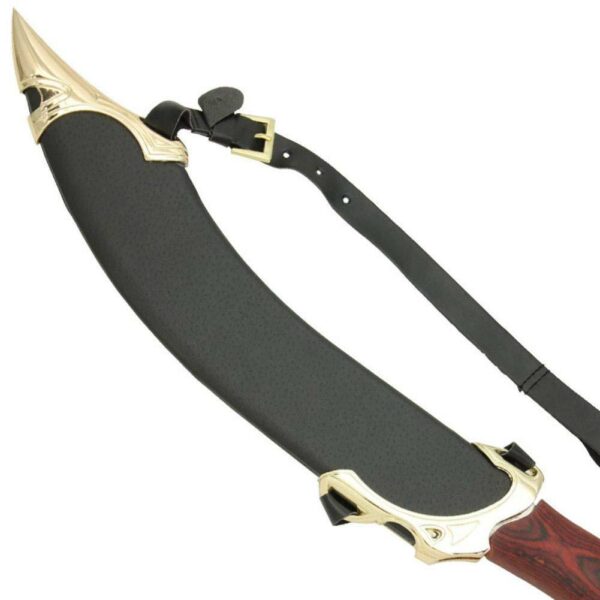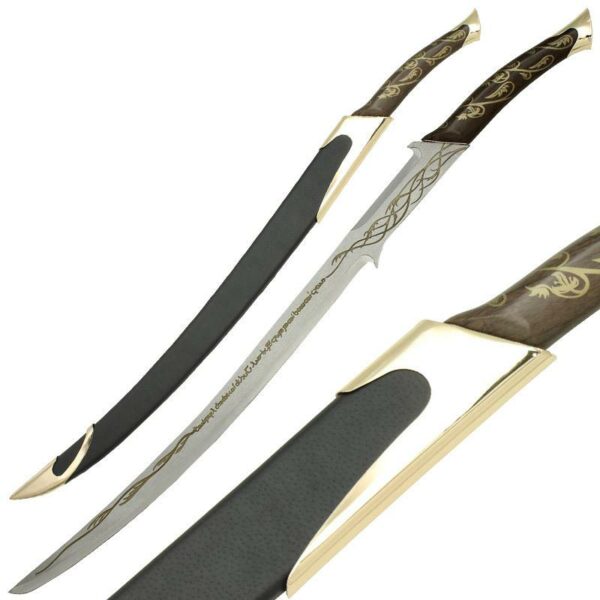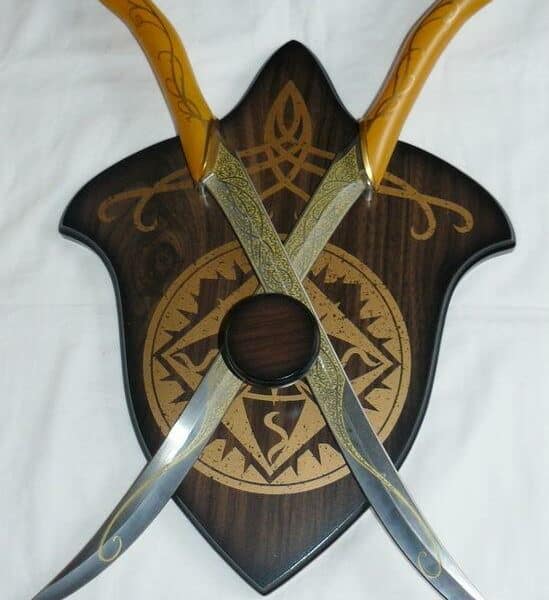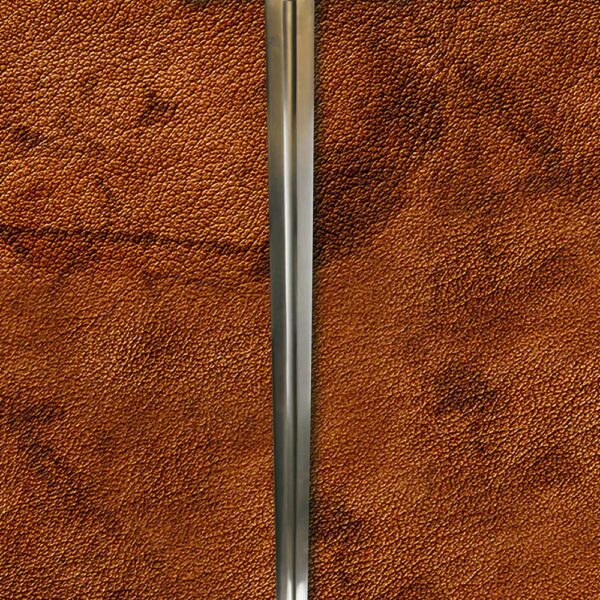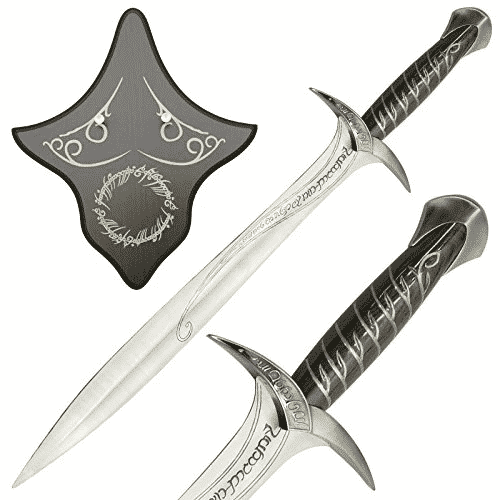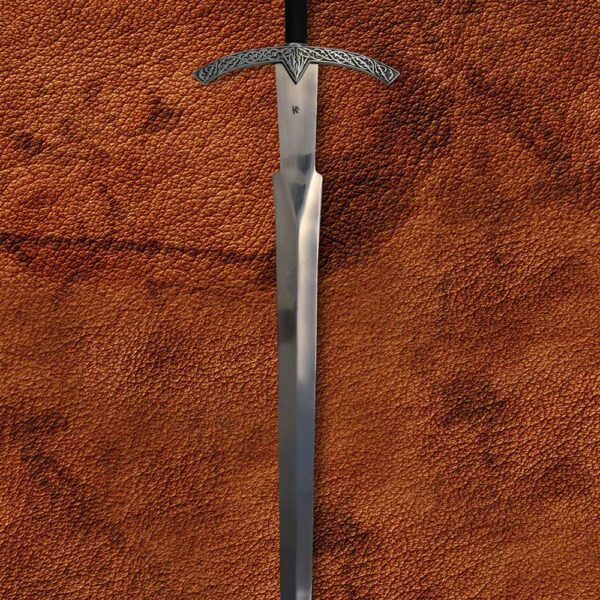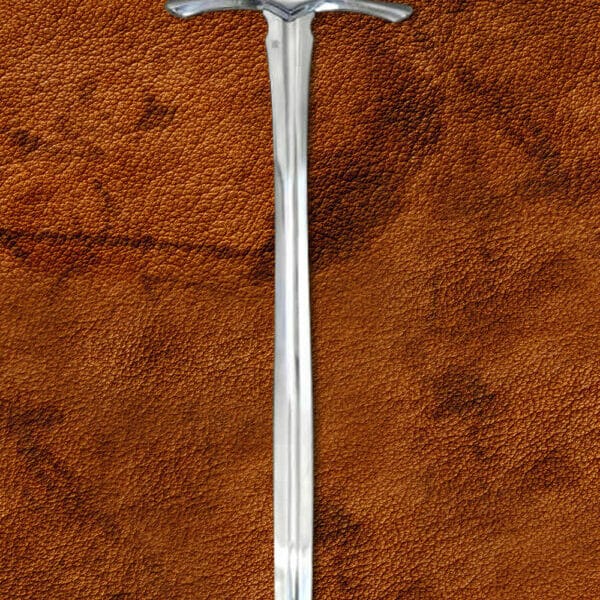The Gandalf Sword: Beautiful, Timeless, and Deadly
The Glamdring sword, which was wielded by Gandalf in the Lord of the Rings and the Hobbit books is a perfect example of Elven craftsmanship. This sword is striking, in more than one sense of the word. The design is graceful and elegant, but also efficient and very functional, making for a highly effective weapon.
The Gandalf Sword replica available (also known as “The Sage”) isn’t an exact copy of the sword depicted in the Peter Jackson adaptations or the books, but the design emulates the sword that we’re so familiar with. This replica is battle ready and appropriate for outfits and collections. However, because it is a real sword, treat it with care as it has the potential to do some real damage.
Glamdring is a hand-and-a-half sword, otherwise known as a bastard sword. This means that it can be effectively used with either one or two hands. Gandalf regularly uses his sword with one hand, wielding his staff in his off hand.
The grip and the scabbard use brown leather, which goes well with the silvery metal. The grip leads into the pommel which has been peened from the tang into an attractive and elegant teardrop shape. The guard is long and slightly curved towards the blade, a design that is both graceful and practical.
The blade itself follows the leaf shape, which is common among elven blades, becoming wider toward the centre of the blade before narrowing into a sharp and savage point. The blade is double edged, like most longswords and bastard swords, and has a fuller than runs down the length of the blade.
While the gentle curves of the blade are graceful and seem to make for a delicate and fragile weapon, the Gandalf Sword is not to be underestimated. The blade is two inches wide and can cut well, but the Glamdring sword also shines when used to thrust into a target, being capable of devastating damage.
The Gandalf sword replica is available in two forms, the ordinary steel version of the sword and the limited-edition Damascus steel variety. This limited-edition elite sword was forged using a combination of different steels, all blended and folded over one another repeatedly.
The process used to originally create Damascus steel is believed lost to the ages, but modern smiths are capable of creating a similar steel which features the stunning rippled pattern that identified Damascus steel. A similar pattern can be formed when folding ordinary steel, but the effect isn’t quite the same.
Glamdring and Gandalf: An Ancient Blade in Ancient Hands
So many iconic weapons that are found in J.R.R Tolkien’s world of Middle Earth have a provenance that is hard to match in other fantasy works. Among these famous weapons we find the Glamdring sword, which is several millennia old by the time we encounter it in the Hobbit and the Lord of the Rings.
When it comes to Glamdring and Gandalf, both sword and wielder make a perfect match as they both have such a storied and long history.
The Elven Blades of the First Age: Unmatched in Quality
About 6000 years before the time of the War of the Ring, Glamdring was originally forged in the First Age for Turgon, a famous Elven King. It was made by Elven smiths, who were some of the greatest craftsmen of Middle Earth. Only some Dwarvern works hoped to rival them.
The elven weapons of the First Age were unique and of stunning quality. This is evident by the fact that so many of them were still in fine condition despite being lost for millennia before being rediscovered.
Think about it with regard to archaeological finds in our world. A sword that has been recovered after a few centuries in an old battlefield wouldn’t make for a good weapon. But Glamdring, along other elven blades from the First Age, were able to be used in battle immediately. Apparently without even needing to be sharpened.
Another, more obvious aspect of First Age elven weapons is their propensity to glow when in the presence of orcs. In the films, only Bilbo and Frodo’s sword Sting had this ability, likely to make it stand out from the others. However, in the books this was true of all First Age elven weapons.
Unfortunately, while the Gandalf Sword recreation is of fantastic quality, we haven’t quite been able to recreate this ability. Or maybe we have, and we don’t know because orcs don’t exist.
The Tragedy Surrounding Glamdring
Before the Gandalf Sword ever found its way in the hands of its eventual owner, it was wielded by the great Elven King Turgon, way back in the First Age. A detailed look at Turgon’s exploits and eventual demise would fill a book (specifically, a chunk of the Silmarillion).
While the story of the Lord of the Rings is undoubtably epic, the First Age was all the more so. This was when the power of the elves and other forces of Middle Earth was at an all time high, and along with all this power came a whole lot of drama.
Turgon, who wielded Glamdring, was king of the secret and prosperous kingdom of Gondolin. Unfortunately, this reign did not stay undisturbed forever. Eventually, Turgon attracted the attention of Morgoth, the original Dark Lord.
Morgoth, originally called Melkor, was an incredibly powerful immortal spirit who was created before almost everything else. He eventually became bitter towards his peers and rebelled, creating discord. Later on, Sauron joined Morgoth as his servant and worked as a double agent to the forces of good before openly declaring his alliance and eventually becoming a Dark Lord in his own right.
Anyway, Turgon’s nephew betrayed the location of the city of Gondolin to Morgoth, which led to it being attacked and destroyed. King Turgon was killed defending the city and so Glamdring was lost to the ages before being eventually rediscovered in the most unlikely of places.
Gandalf: The Great Wizard
Despite his appearance as an old man in robes, Gandalf was no human. Instead, he was what’s known as one of the Maiar. These are immortal spirits who helped the Valar to shape the world itself and piloted the Sun and Moon.
The Maiar were incredibly powerful and could take many shapes, but their power can be corrupted when used for evil purposes. Examples of fallen and corrupted Maiar are Sauron and the Balrog of Moria. These fallen Maiar were still immensely powerful but lost the ability to take different shapes.
Before arriving at Middle Earth in the form we’re most familiar with, Gandalf was known as Ororin and lived in the undying lands. He was sent in the form of an elderly wizard to Middle Earth to help those who opposed Sauron.
In this body, Gandalf the Grey roamed the land as a wanderer and counsellor, having much to do with the Dunedain Rangers to the north and with the elves. Eventually, he encountered the Hobbits of the Shire and apparently took a liking to them. He specifically seemed to enjoy shaking up the odd sleepy Hobbit and inspiring adventures, to the horror of their neighbours.
One of these Hobbits was Bilbo Baggins, who rediscovered the One Ring and indirectly kicked off this whole ‘War of the Ring’ business again in earnest. It was on that quest that Gandalf rediscovered Glamdring.
As one of the Maiar, Gandalf was incredibly ancient, wise, and powerful. As a character, he was influenced by Odin as the Wanderer, with his long beard, wide brimmed hat, and a staff. This archetype was so iconic that it essentially became a stereotype for the “wise wizard mentor”.
However, Gandalf wasn’t perfect. Sure, he wasn’t human, but he had human qualities. Gandalf had a temper, especially when in close proximity to Pippin, everyone’s favourite hobbit. But his soft spot for Hobbits also revealed a deep compassion and patience for other people. He could be blunt and hurried, or gentle and even funny, depending on the situation.
Gandalf was also cunning, using his form as an elderly man to elicit sympathy and to encourage people to underestimate him. In truth, Gandalf was a formidable warrior, wielding both sword and staff with brilliant skill.
Staff and Sword in Accord: Gandalf and Glamdring United
Thousands of years after it was lost, Glamdring ended up in the possession of a group of trolls. When these trolls were turned to stone, Gandalf, Bilbo and Thorin’s company entered the troll cave and discovered, among other things, a stash of ancient elven swords.
As you may have guessed, one of these swords was Glamdring. As it was formerly a king’s sword, Glamdring looked the part. The scabbard and hilt were beautifully adorned with jewels and precious metals, and the blade intact despite its age. The other two swords found were a matching sword called Orcrist, which Thorin claimed, and a knife which Bilbo named Sting.
Elrond was the one who later identified the Glamdring sword as “Foe-hammer that the King of Gondolin once wore”. It was also later named Beater by the orcs of the Misty Mountains, after Gandalf put it to good use laying waste the Goblin King and later to many more orcs.
Gandalf kept a hold of his new sword, using it along with his staff to great effect. He used Glamdring to achieve several feats and in many battles to come. Most impressively, Gandalf defeated and slayed the Balrog of Moria.
The film depicted Glamdring bursting into life when he plunged it into the chest of the Balrog and deflecting attacks of lightning. If you do happen to come across a Balrog on your travels, feel free to see if the Gandalf Sword replica has the same effect.
Upon slaying the Balrog and rather dramatically flinging its ruin upon the mountainside, Gandalf seemingly passed away himself. However, as a Maiar, Gandalf did not die. His body did, but Gandalf was sent back to Middle Earth as his task wasn’t yet completed.
When Gandalf returned, he was no longer Gandalf the Grey, but had become Gandalf the White and the new leader of the order of the Wizards. This is because Saruman the White fell and allied himself with Mordor, betraying Middle Earth and becoming Saruman of Many Colours. Tragically, the Peter Jackson film did not portray Saruman wearing a multicoloured robe at this point.
As Gandalf the White, Gandalf managed to keep Glamdring and so continued to wield it during the War of the Ring. In the Peter Jackson movies, the Witch King destroys Gandalf’s new white wizard’s staff. Upon the loss of his staff, Gandalf switched to using two hands when wielding Glamdring and was just as much an effective warrior.
If you’re a LOTR fan you seriously need to check out the Aragorn Knife, Anduril Sword, Legolas Sword, Hadhafang and Ranger Sword!
Tech Specs
There are two different variations of the Gandalf sword for sale here at Medieval Ware. Both of them have the following specifications:
- Total Length: 46.5 inches or 118.1 cm
- Blade Length: 36 inches or 91.4 cm
- Crossguard: 10 inches or 25.4 cm
- Handle and pommel: 10 inches or 25.4 cm
- Blade Material: 5160 high carbon steel
- Fittings: Mild Steel
- Weight: 3lbs 7oz. or 1.56 kg
- Point of Balance: 4 inches or 10.2 cm
The elite version of the Gandalf Sword has the same design and dimension, but the steel used for the blade, guard, and pommel has been forged using modern Damascus steel. This means that the material is a blend of four different types of steel: namely, 1095, 5160, L-6 and O1 steel.

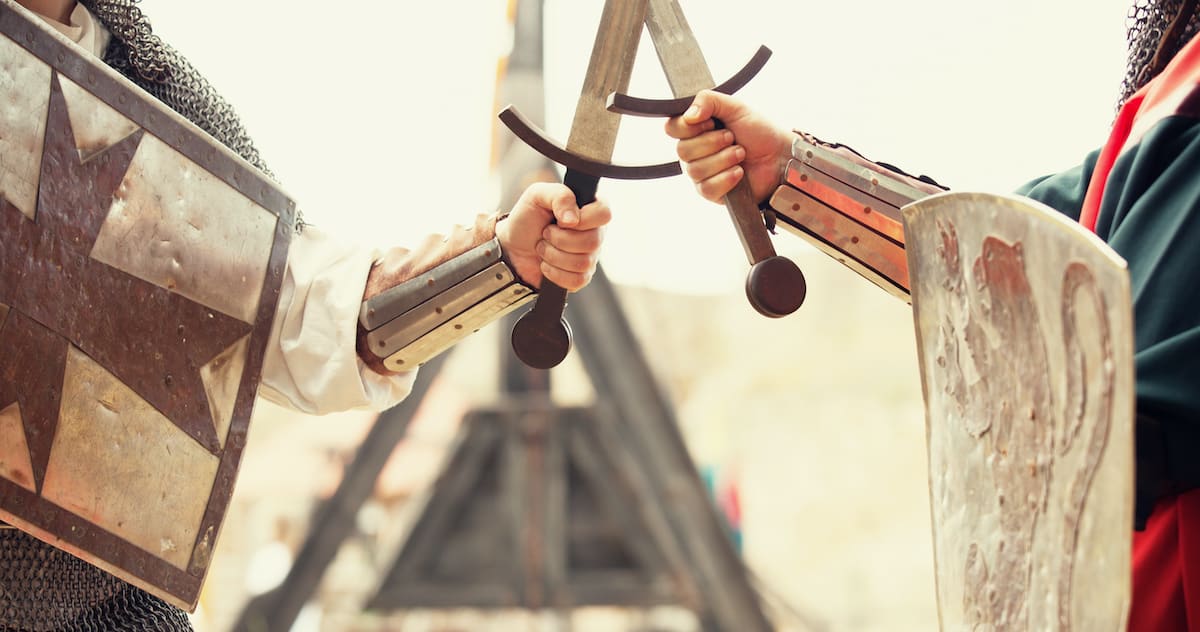 Historical Swords
Historical Swords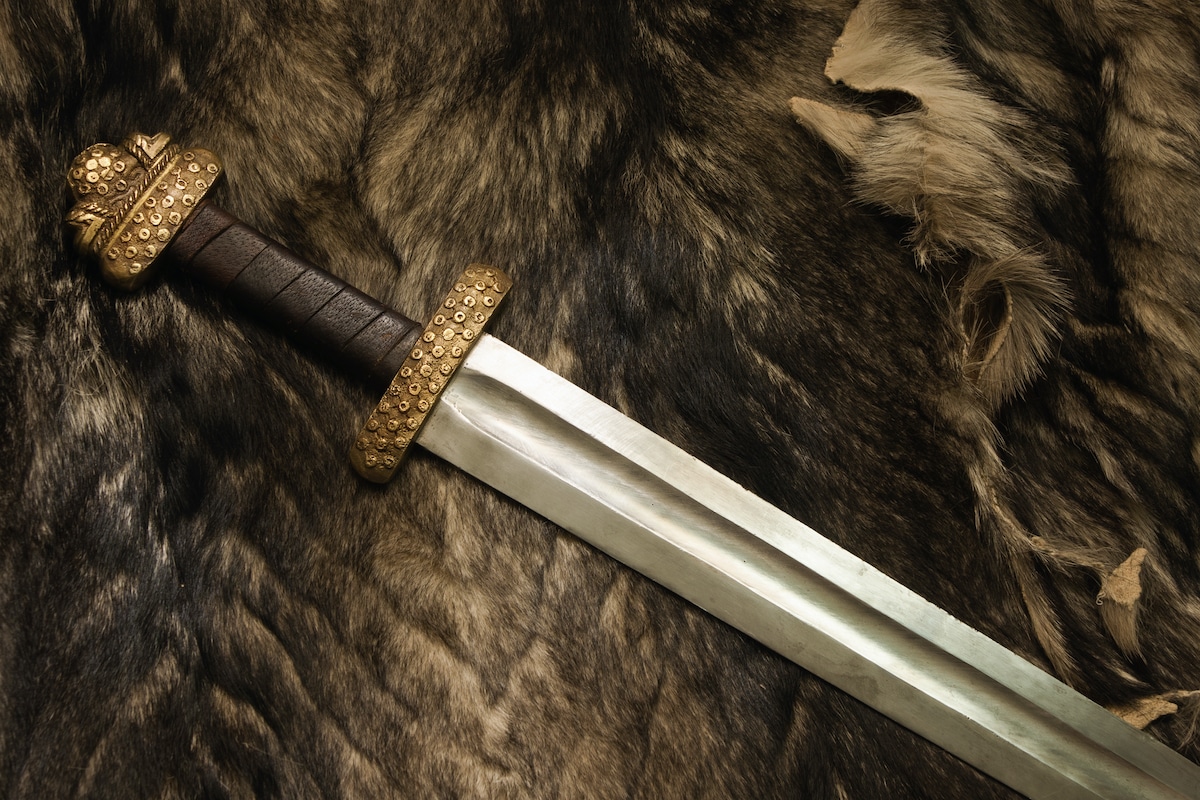 Norse & Viking Swords
Norse & Viking Swords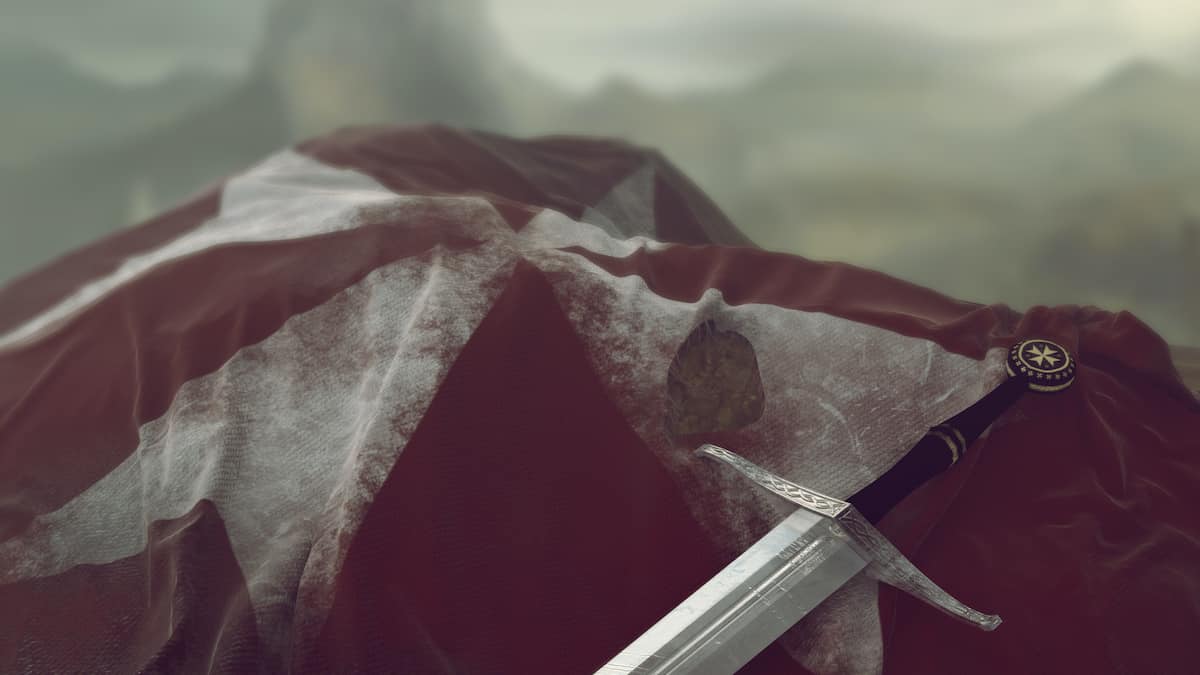 Templar Swords
Templar Swords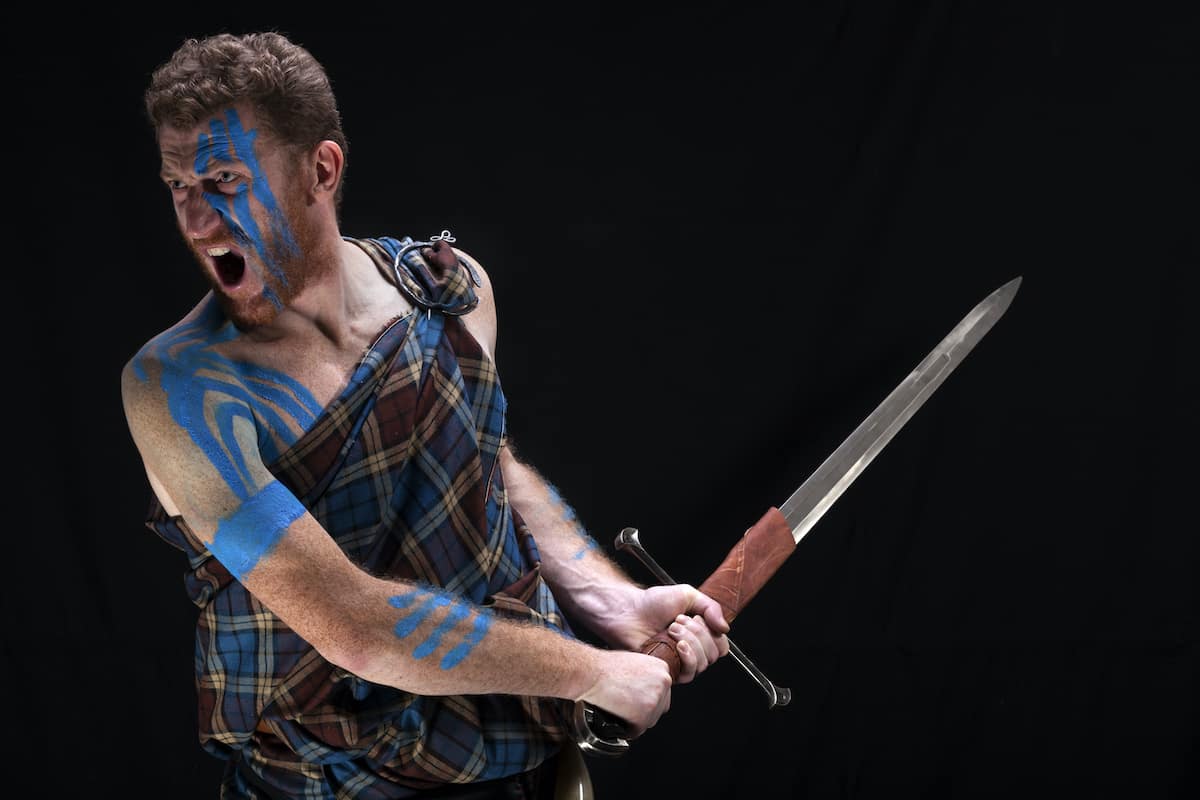 Claymore Swords
Claymore Swords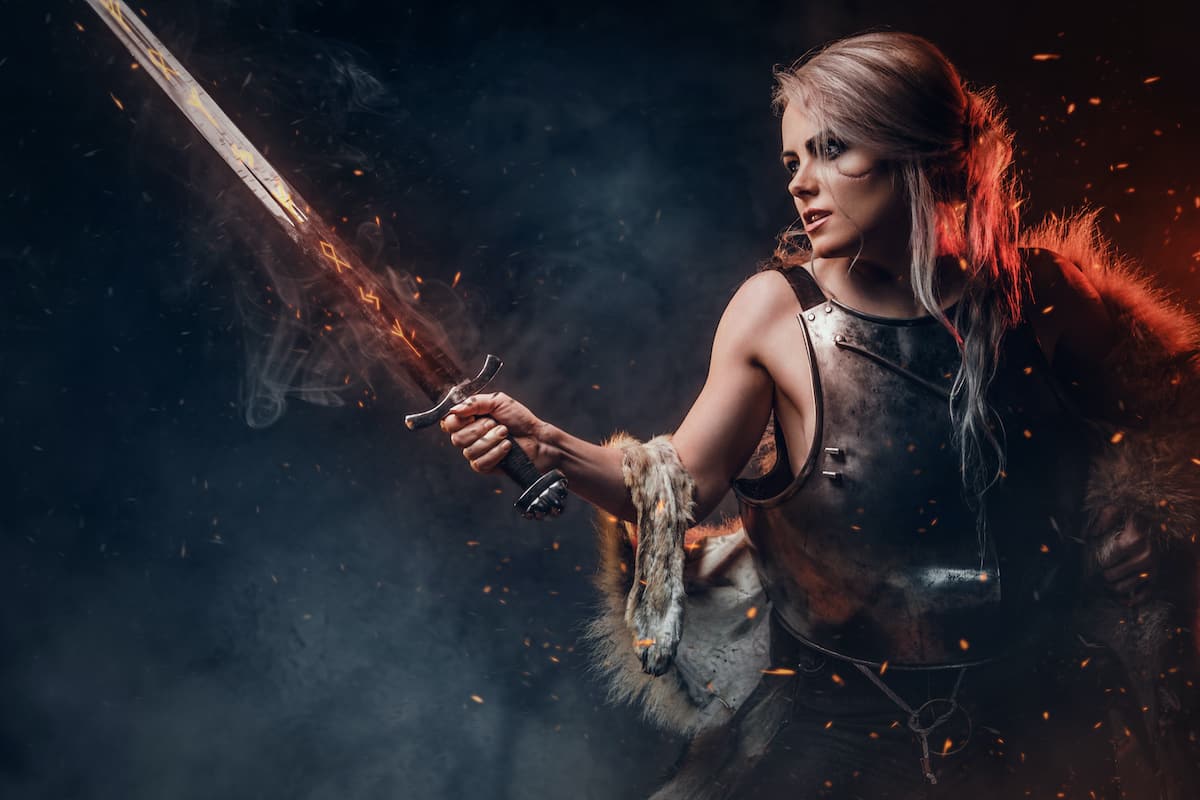 Fantasy Swords
Fantasy Swords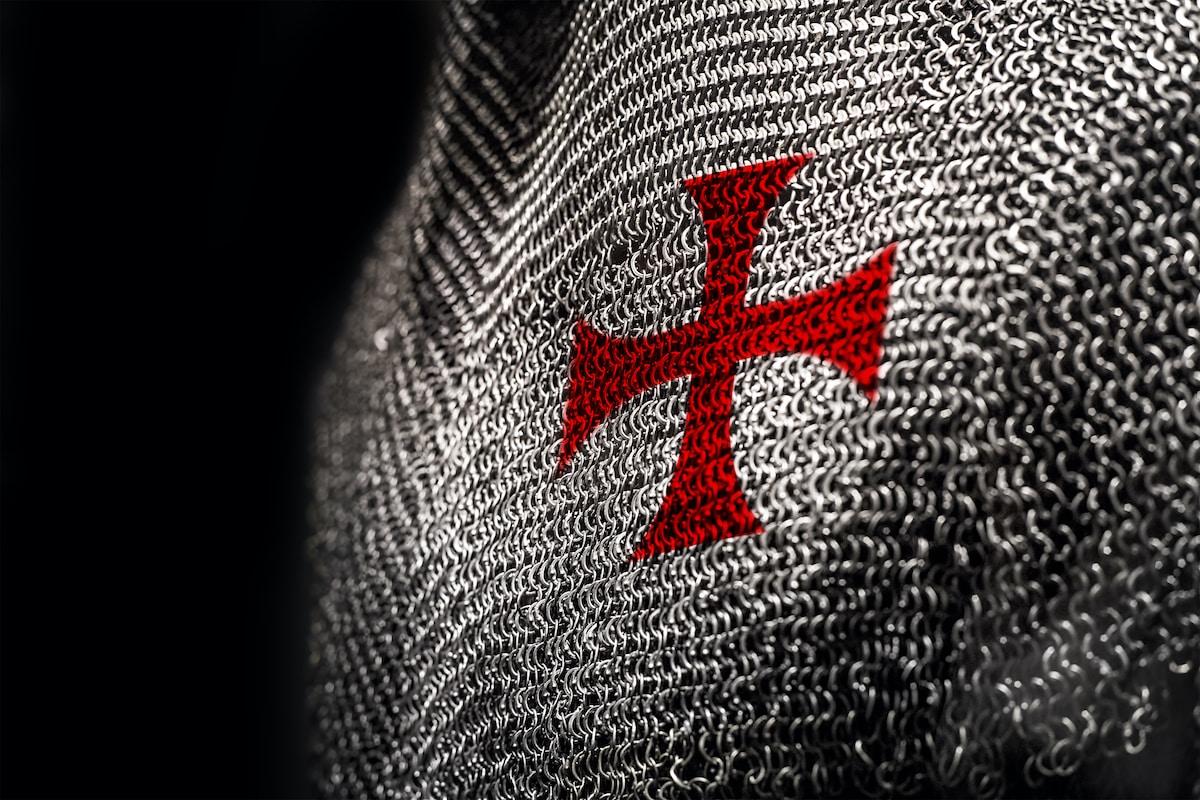 Chainmail
Chainmail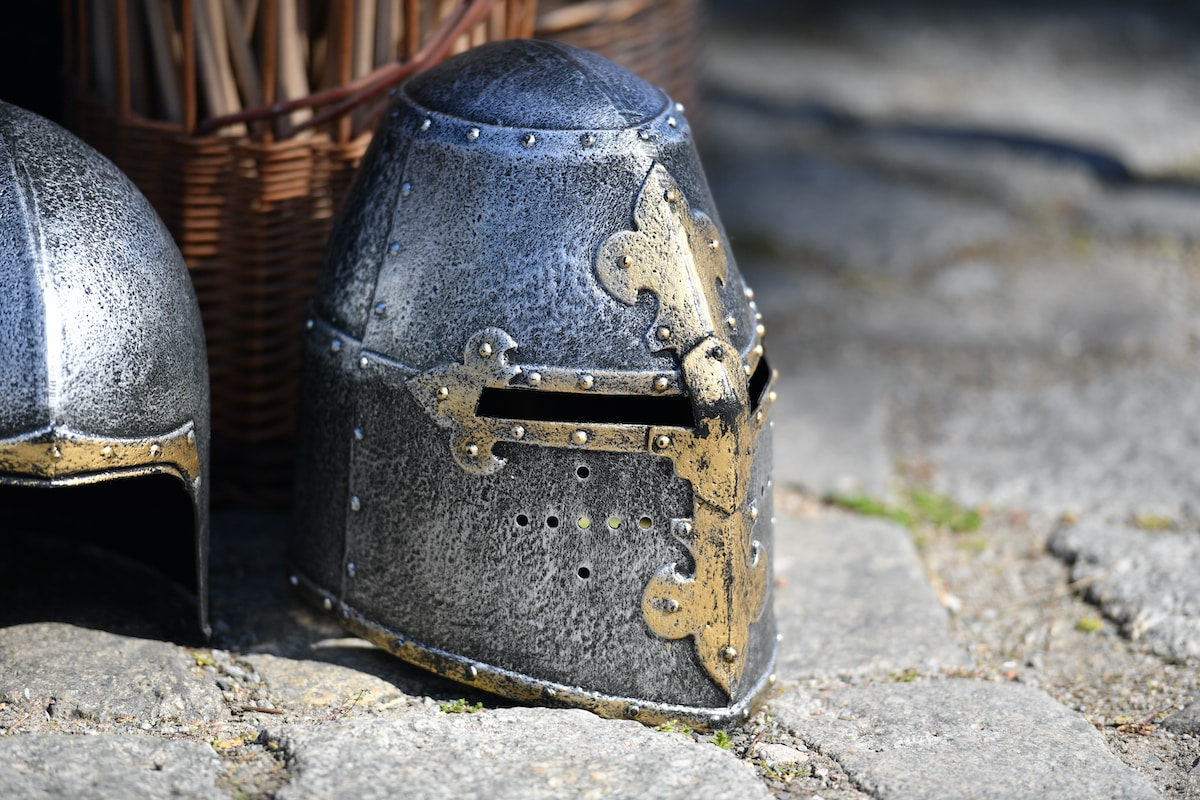 Helmets
Helmets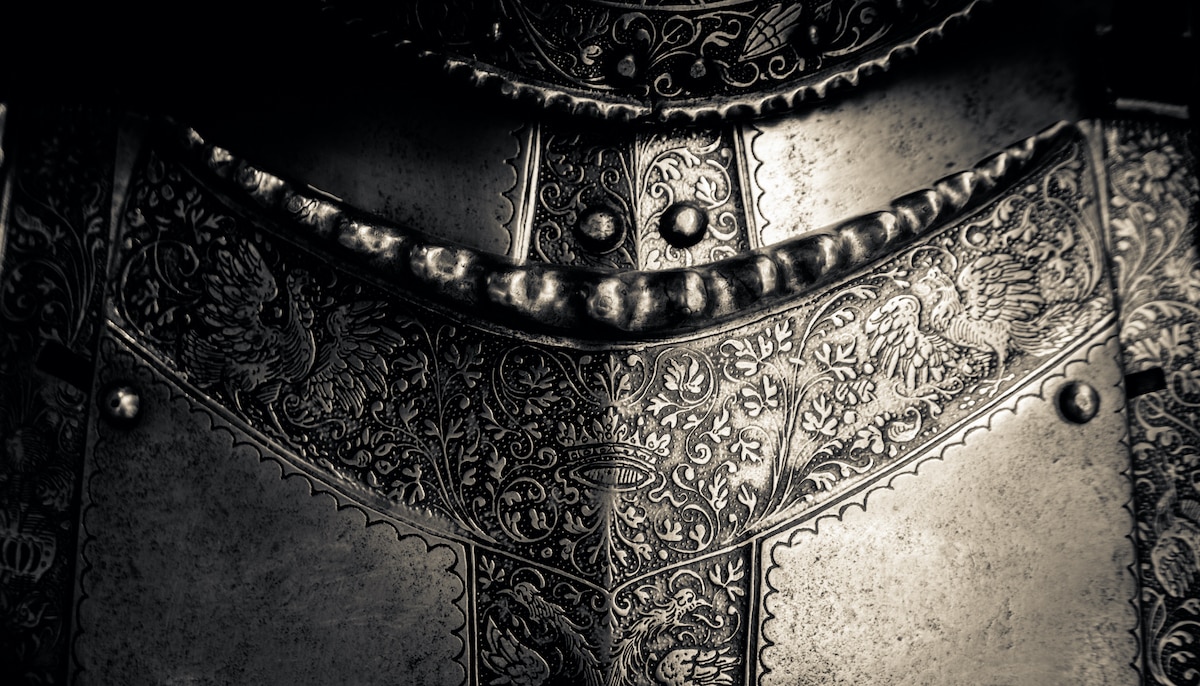 Torso Armor
Torso Armor Bracers and Arm Protection
Bracers and Arm Protection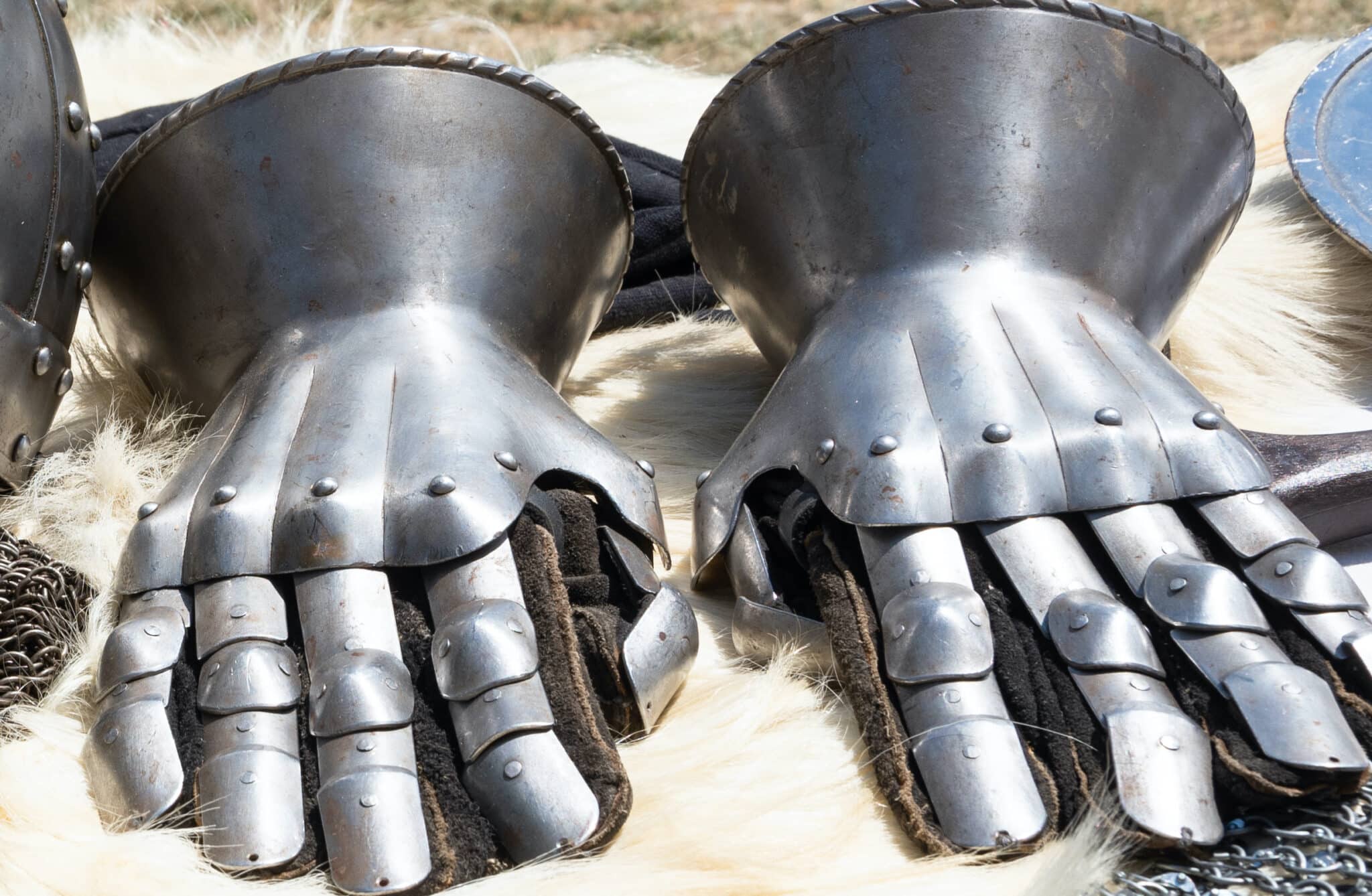 Gauntlets
Gauntlets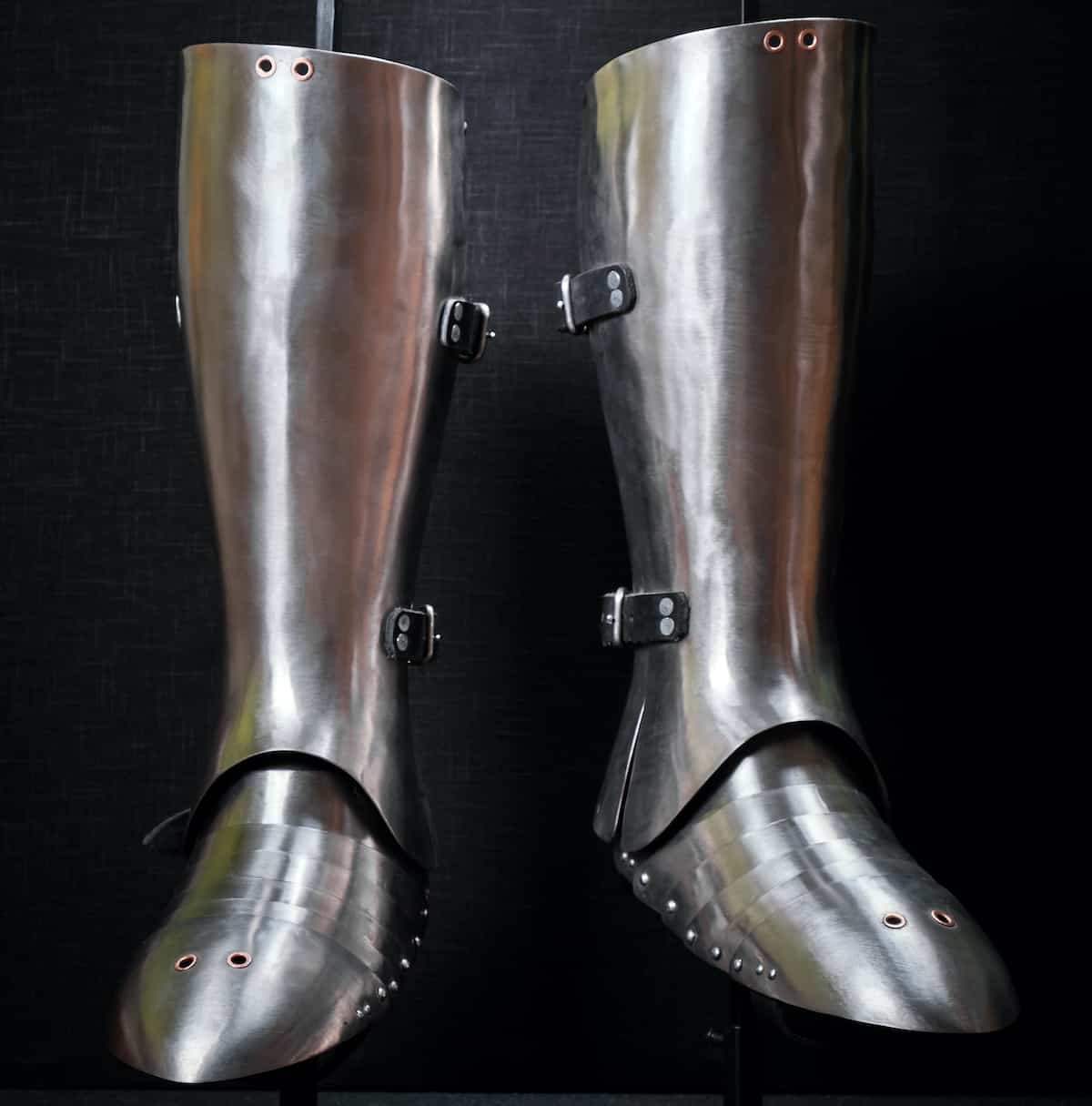 Leg Armor
Leg Armor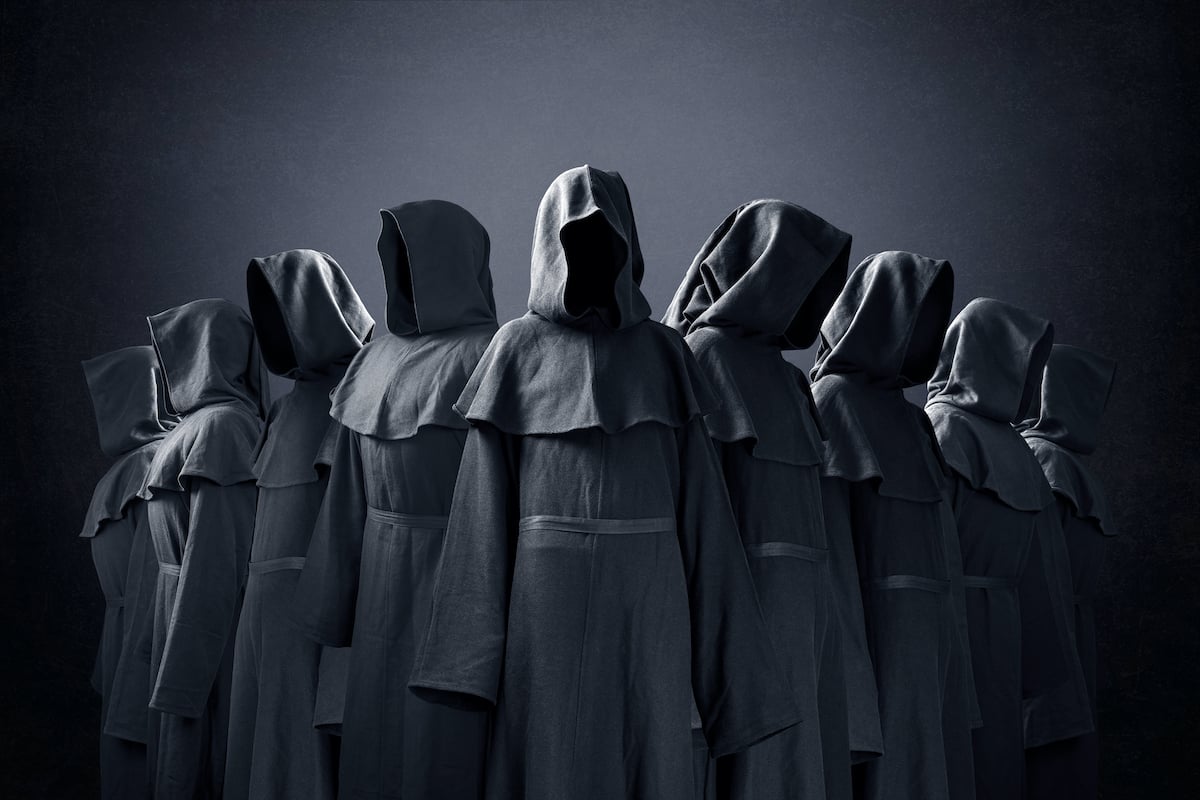 Cloaks
Cloaks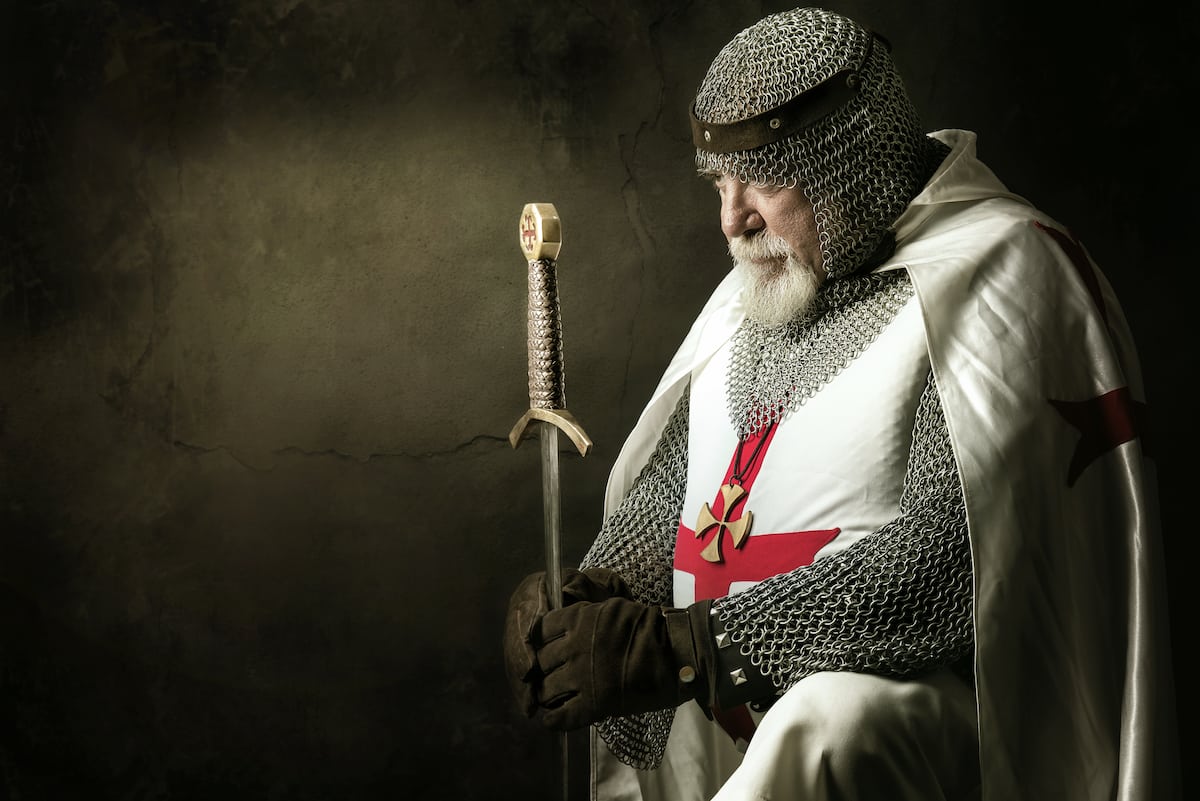 Tabards
Tabards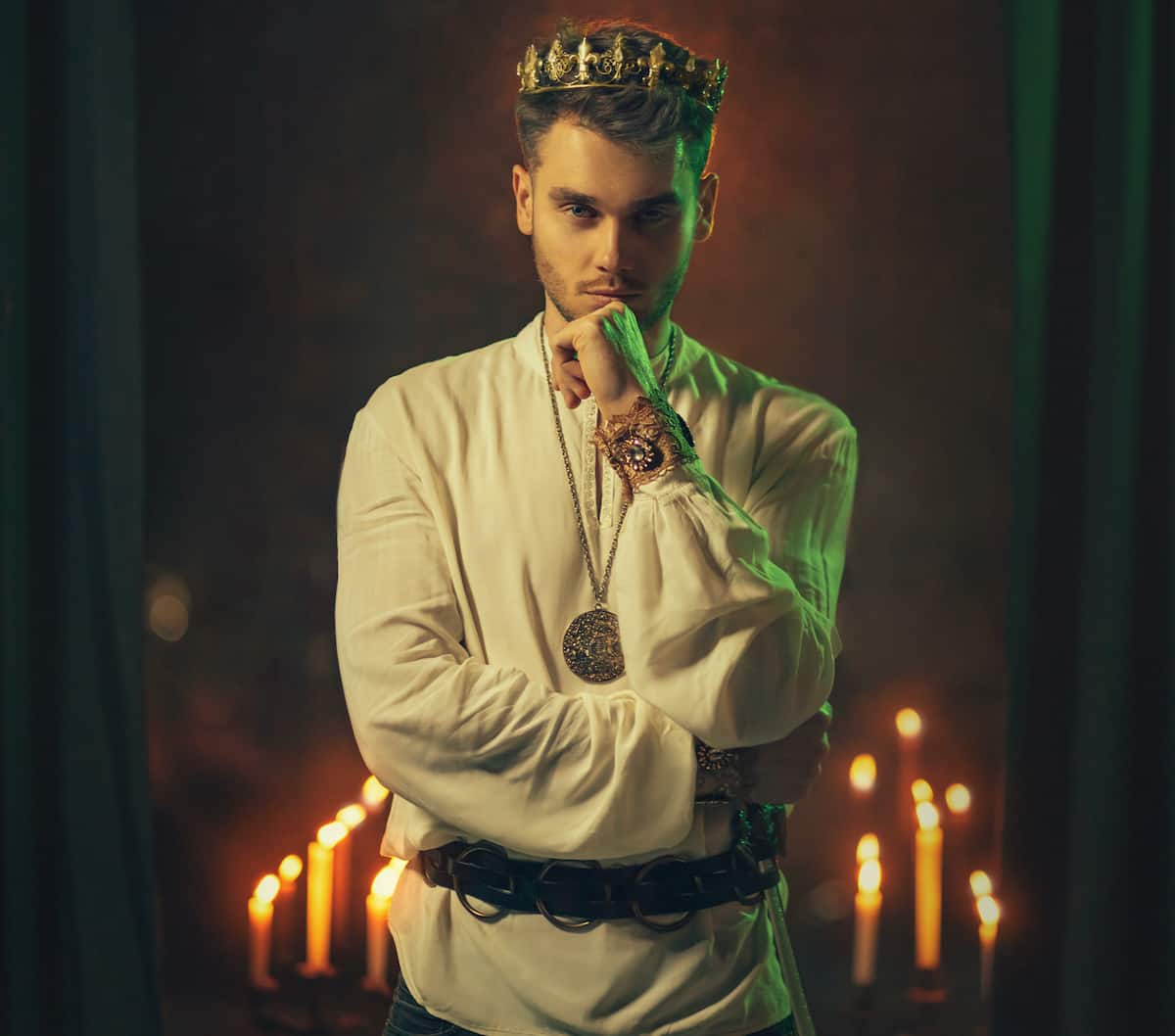 Shirts
Shirts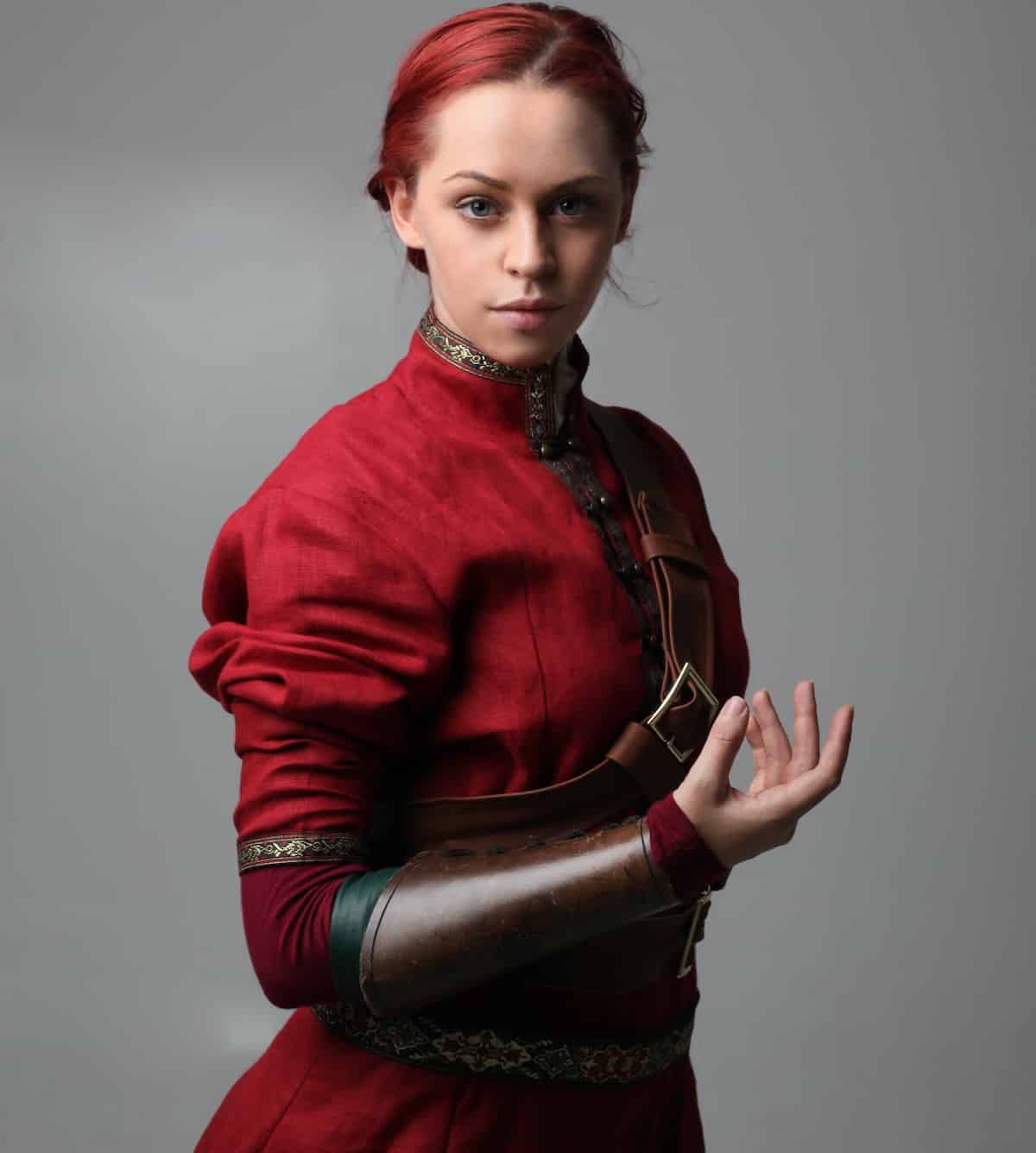 Tunics
Tunics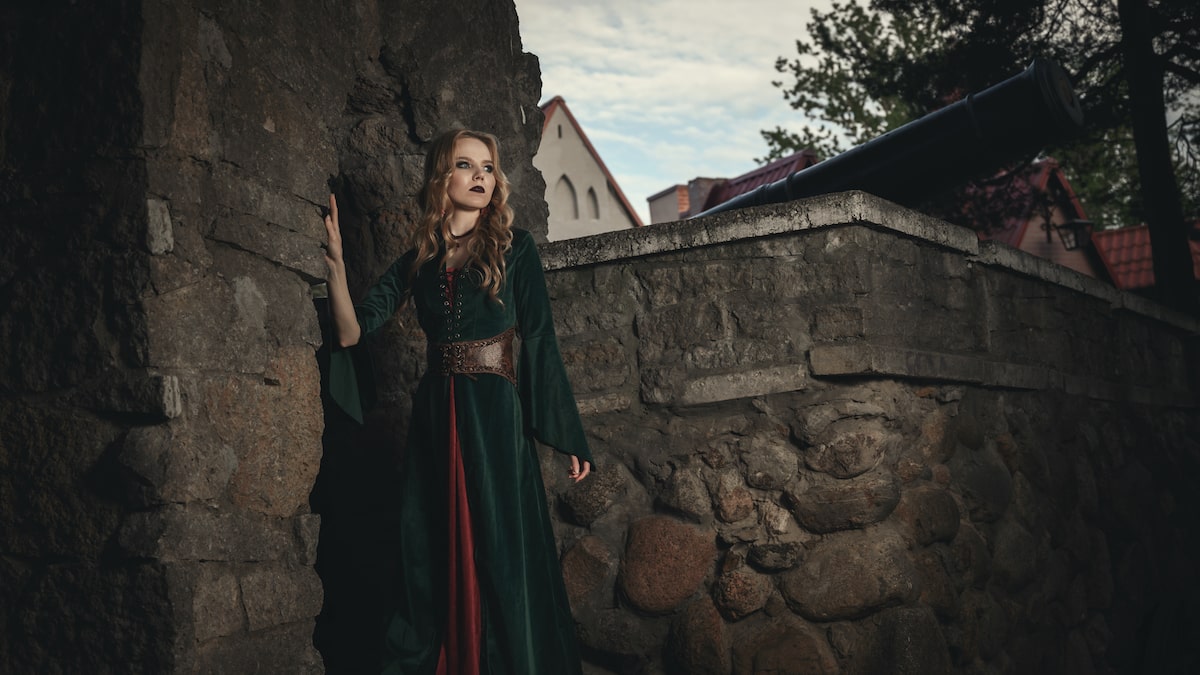 Dresses
Dresses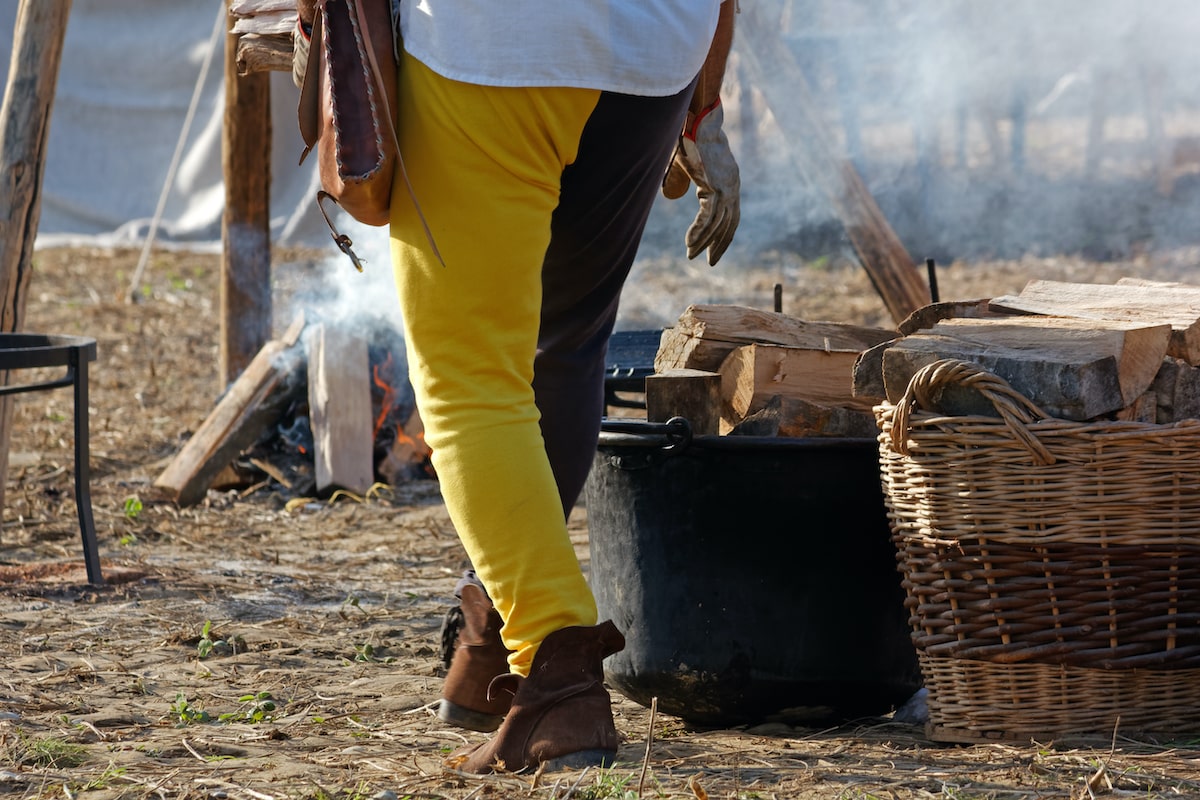 Pants
Pants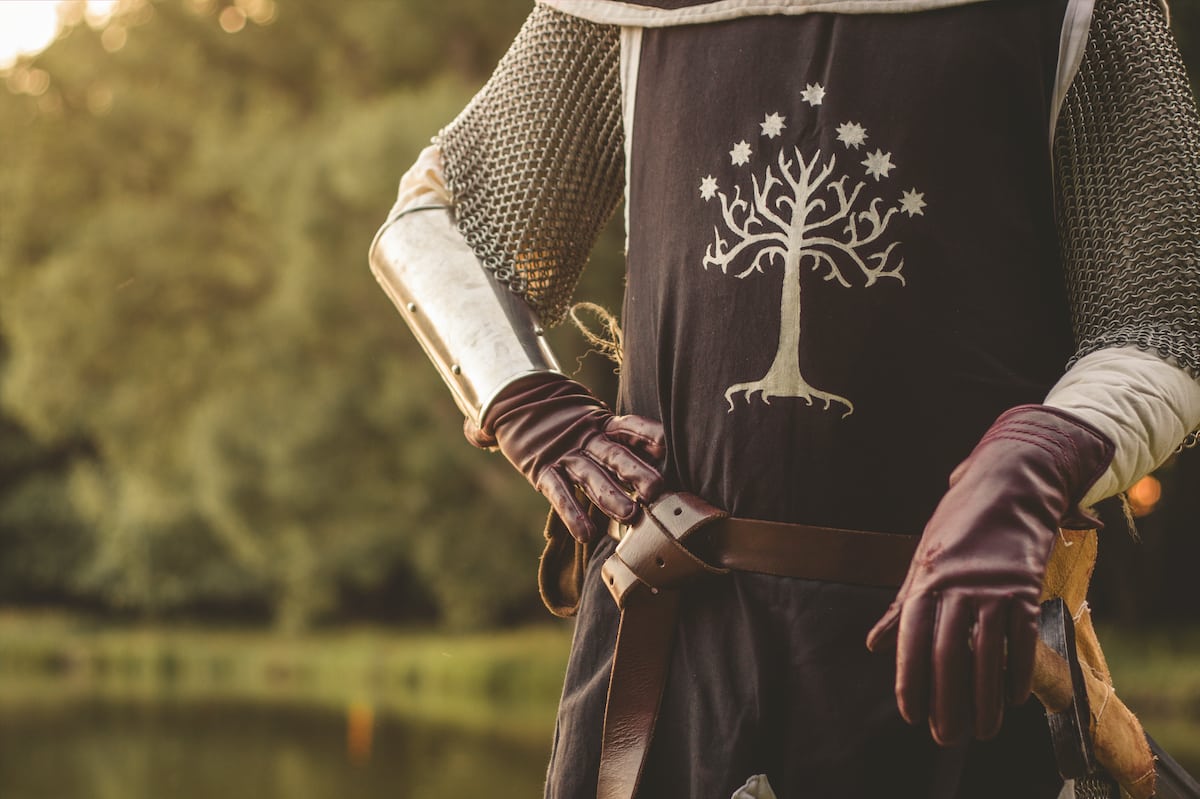 Gloves
Gloves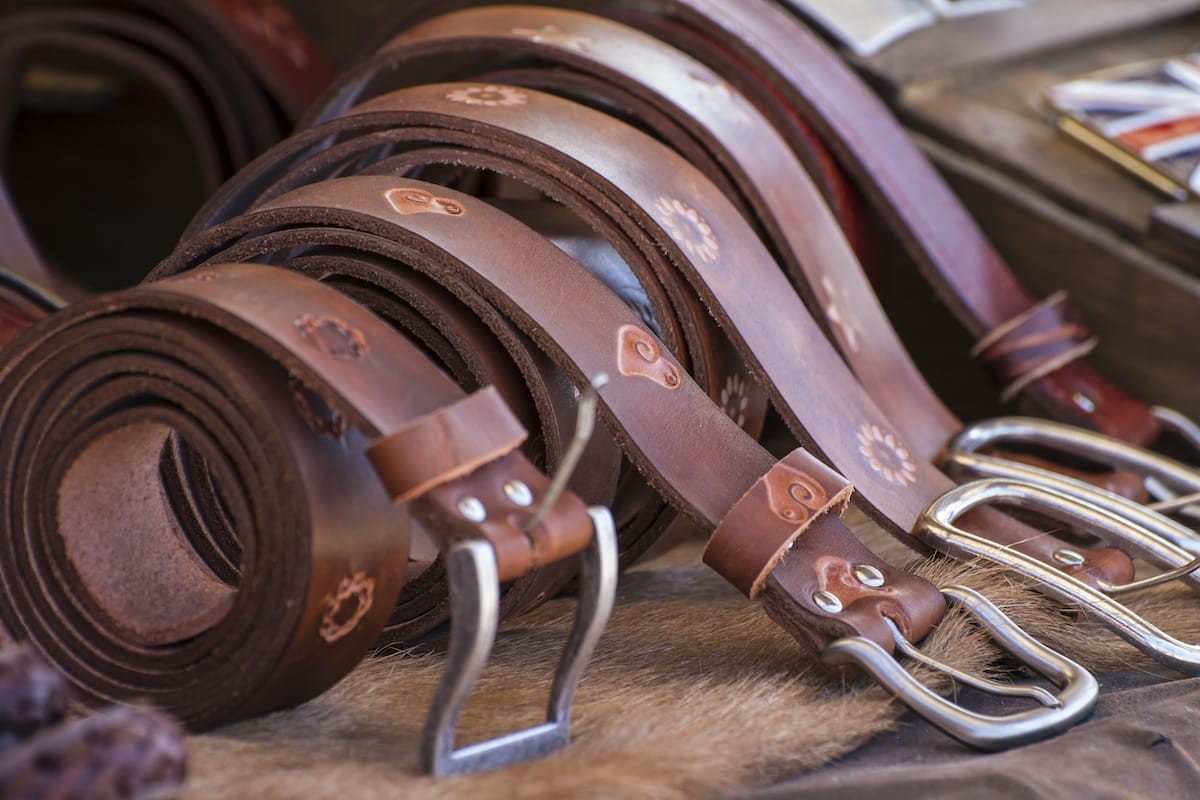 Belts
Belts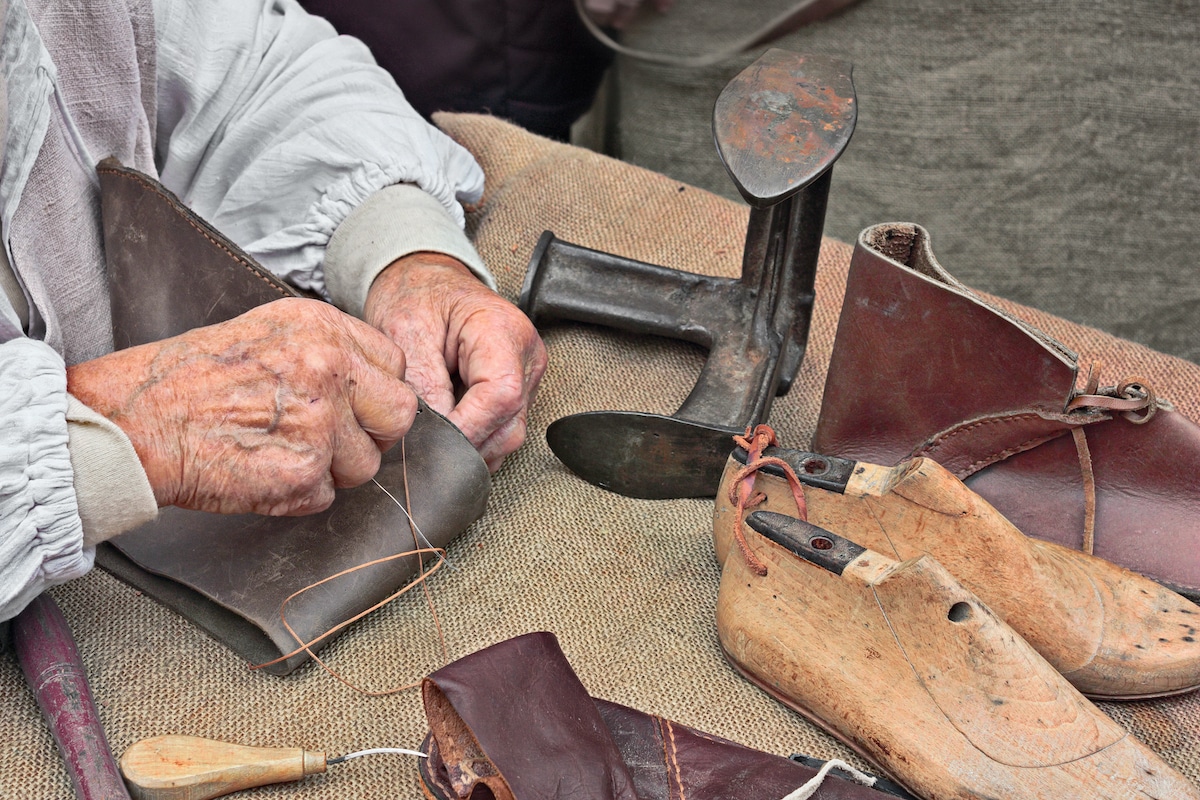 Shoes
Shoes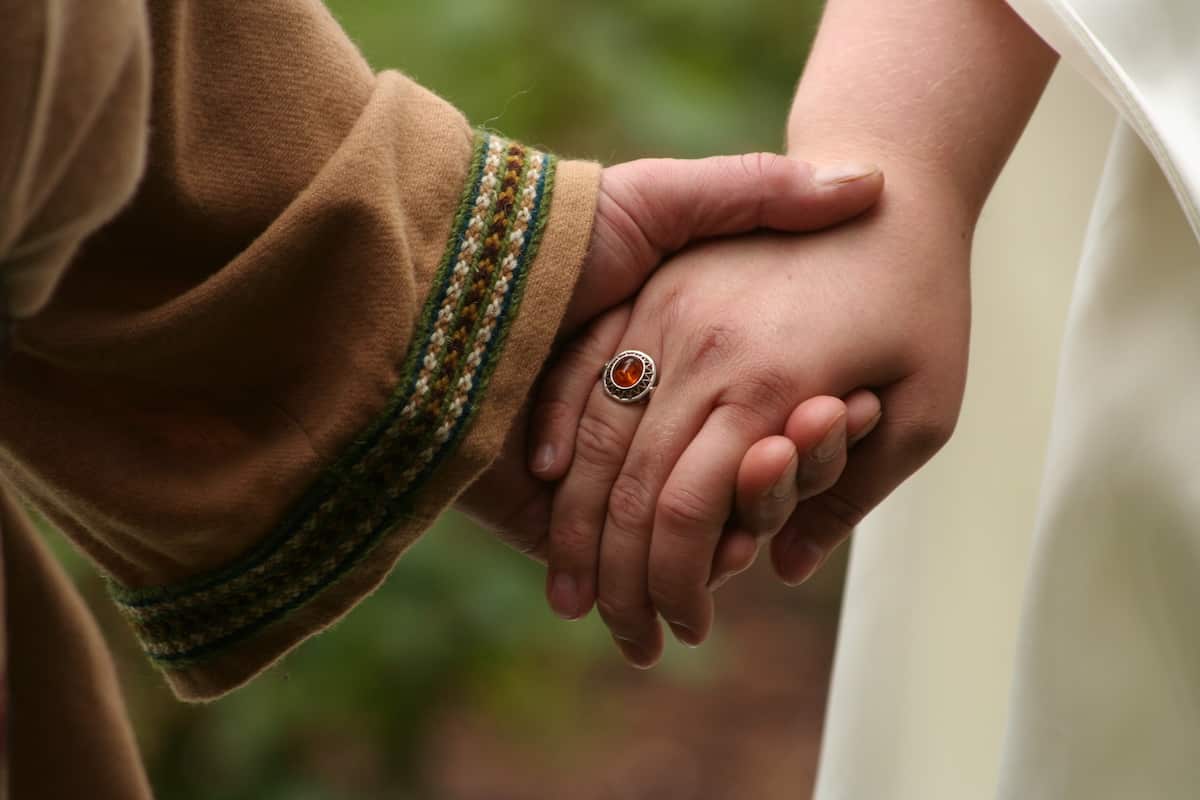 Rings
Rings Necklaces & Pendants
Necklaces & Pendants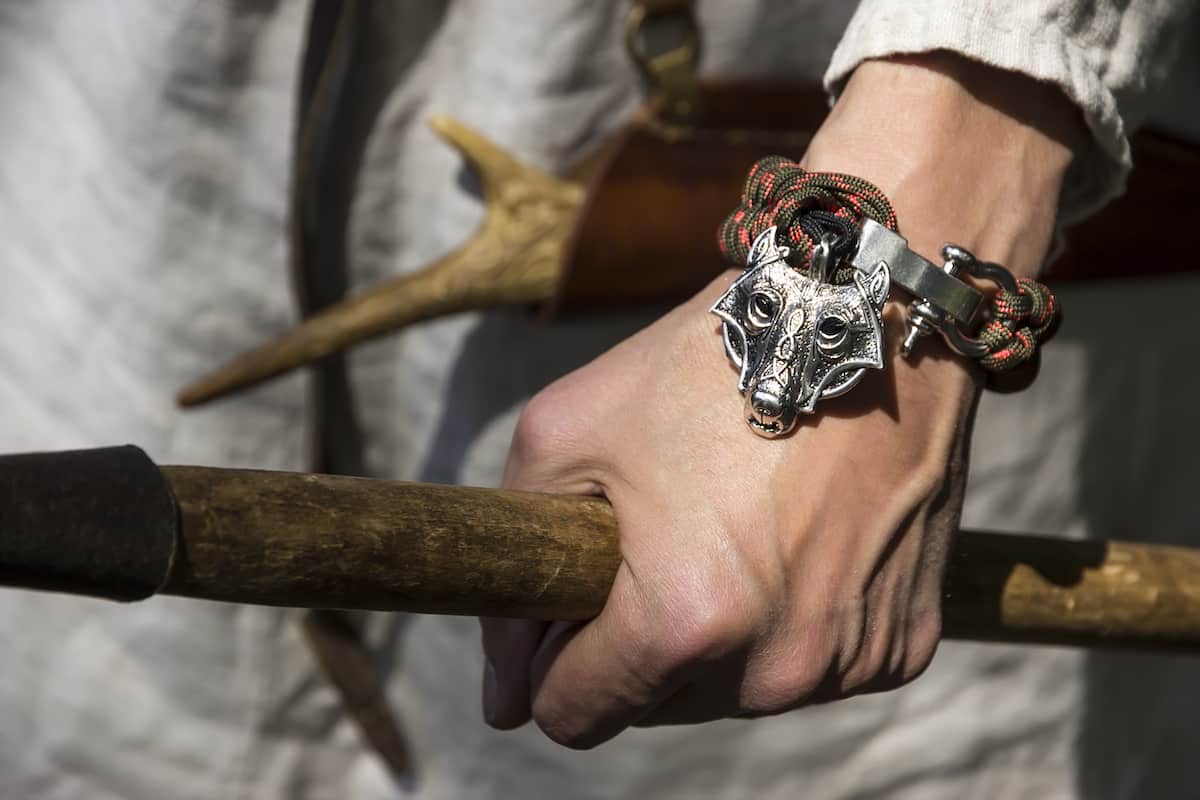 Bracelets
Bracelets